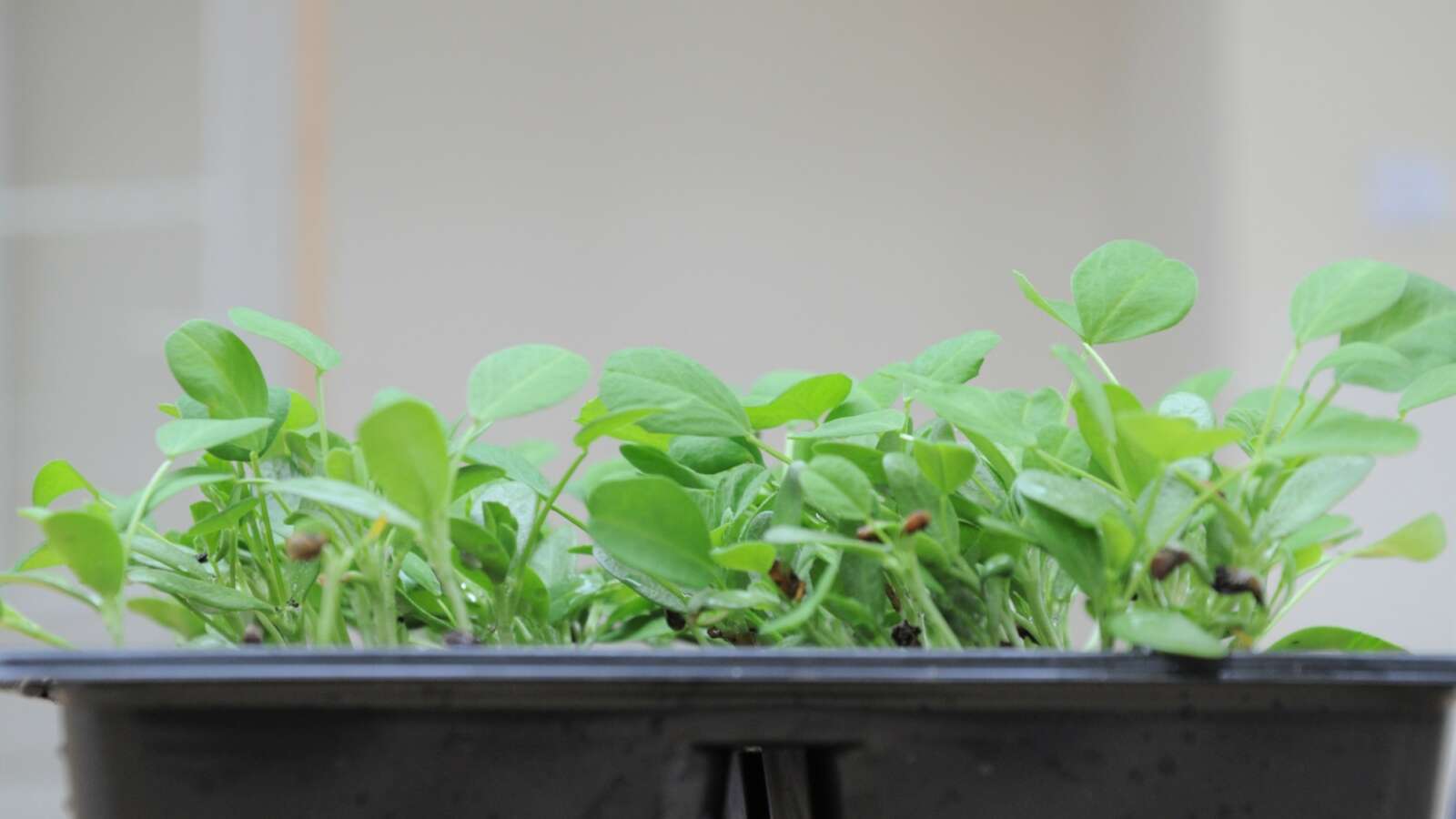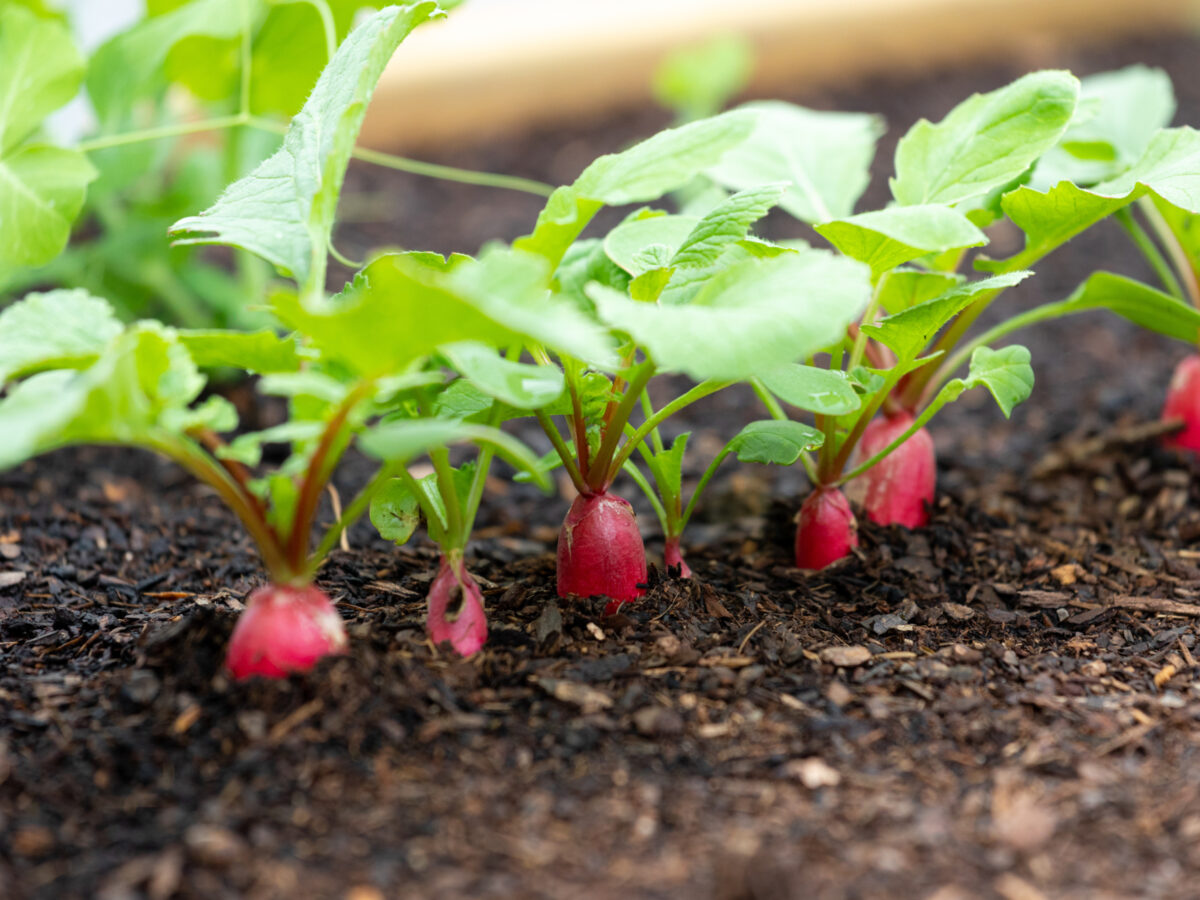
Fenugreek, Methi
- Tags
- Vegetables and herbs
| Growing calendar | |
|---|---|
| Sow indoors | Almost all year indoors |
| Harvest | Outdoors: May-August, indoors: almost all-year-round |
| Sow outdoors | April-August |
Fenugreek is a legume and is commonly grown from packets of seed spice available in Asian grocers (often called 'Methi' or 'Mathi'). There are two distinct forms. The more common large-seeded variety (Trigonella foenum-graecum) has slightly larger leaves and white flowers. This variety can only be cut once so needs successional sowing. The less common smaller seeded variety (Trigonella glabra) has slightly smaller leaves, yellow flowers and will regrow after cutting. It is slightly less aromatic.
Plants will provide fresh leaves for cutting almost all year round, provided there is good light and temperatures above 15.5C/60F.
How to sow fenugreek
Fenugreek doesn’t like being transplanted so sow seeds indoors in small pots of peat-free compost to grow on, on a windowsill.
Or sow outdoors directly into a well-drained sunny site: it will tolerate almost any soil although a free draining one is probably best. Seeds should be lightly sown in rows 0.5 cm/0.25in deep into drills, 20cm/8in apart, aiming for a 5cm/2in spacing between plants within a row. It can be sown any time between April and August and will withstand some frost. Small-leafed methi is much hardier.
Germination will normally take place within a week. The plant grows rapidly and is vigorous enough to compete against most weeds. The small-leafed variety will continue to grow slowly throughout the winter whereas the larger one will generally die off in late autumn.
Harvesting and use
If you are harvesting the plants for leaves, cut the stem a few centimeters above the base when the plants are 25 cm/9.5in tall. Clip the small-seeded type regularly, to prevent it seeding and keep it productive.
Plants will generally be ready six weeks after sowing depending on the weather. The quality of leaves will decline once flower buds start to appear so try and harvest before then. The larger seeded, white-flowered variety will not regrow after flowering so needs successional sowing whereas the yellow-flowered, small-seeded variety can be cut a number of times.
The fresh leaves can be cooked, steamed, or popped in a curry with potatoes, in a similar way to spinach. Their flavour is quite mild. Leaves can also be dried and will have a more pronounced, bitter taste.
Fenugreek can also be sprouted as a salad with a distinctive spicy taste. Be sure to use seed for sprouting or culinary use (packets of seed spice are fine), rather than seed that may have been treated with fungicide. Soak the seed overnight, rinse well then leave in a slightly damp jar on its side, rinsing twice a day (or use a bean sprouter). The sprouts will be ready after a few days, so should be eaten before the sprouts are 3-4 cm long, otherwise they start to turn bitter.
Troubleshooting
Despite being a legume, fenugreek doesn't always fix nitrogen. For this to happen, the right bacteria (Rhizobium meliloti) need to be present in the soil. These are more likely to be present, if fenugreek has been grown on the site before.
To see if the plants are fixing nitrogen, carefully dig (don’t pull!) up a plant and look for tiny pinkish nodules (2mm/0.1in diameter) on the roots. Very poor soil can affect the flavour of the crop.
Seed use and saving
As fenugreek seed can be obtained cheaply and easily, it's not commonly grown for seed in the UK.
Fenugreek will flower and produce thin seed pods. Allow the pods to ripen and turn yellow on the plant then harvest shortly before the seed pods pop open. The seeds have a pungent bitter taste and characteristic smell that is a key constituent of curry powder. The bitter taste can be mellowed by roasting. They can be used whole or ground to flavour curries or rice dishes. In Egypt, the seeds are sweetened and used as a tea and in many Middle Eastern cultures, they are used in cakes and confectionary.
The seeds are also reputed to have many medicinal properties including relieving joint pain, lowering blood sugar level and even restoring hair growth!
| Growing notes | |
|---|---|
| Difficulty | Easy |
| Germination time | 4-10 days |
| Average time to harvest | Four weeks |
| Equipment needed | N/A |
| Average plant size | 15-25 cm height & spread |
| Family group to grow with | Legume |
| Key nutritional content | Vitamins A, C, K, folic acid, phytonutrients and fibre |
| Latin name | Trigonella |
| Seed saving notes | Seed saving is possible but cheaper/easier to buy seed |

Love our growing advice?
Get a direct link to our horticultural advice team, as well as members-only online resources with a Garden Organic membership.